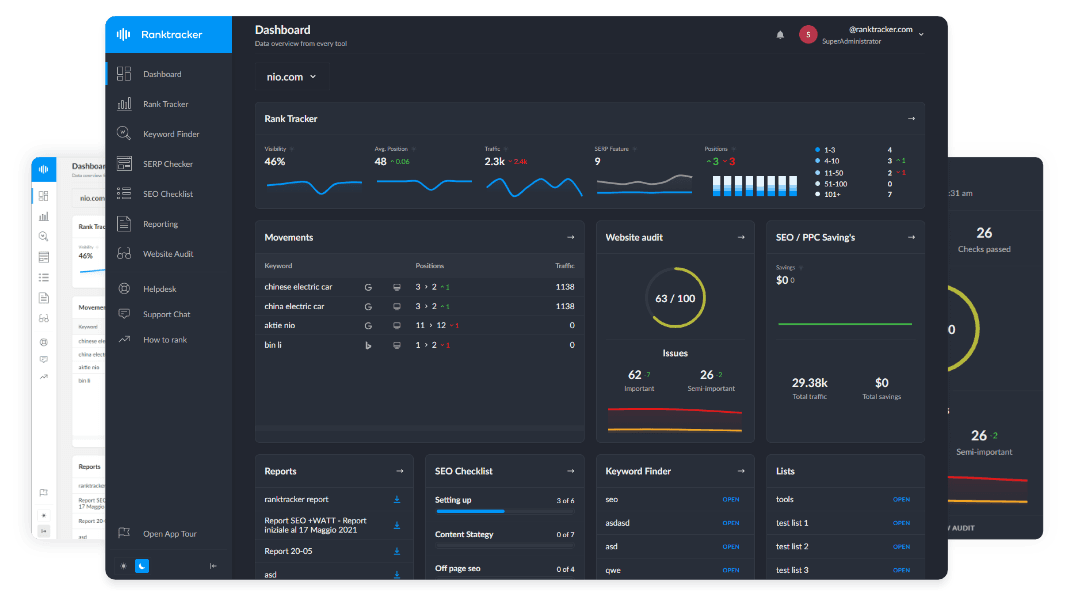Intro
In recent years, mobile devices have become an integral part of our daily lives. From checking emails to making purchases, smartphones and tablets are now the primary devices for many users when browsing the web. As mobile usage continues to grow, search engines like Google have adapted their algorithms to prioritize mobile-friendly websites. Mobile SEO, or the optimization of your website for mobile devices, is now crucial for maintaining visibility and achieving success in search engine rankings. Platforms like Lüks Casino, which target mobile users in Turkey, have already embraced mobile optimization to ensure a seamless experience for their customers. In this article, we will explore why mobile SEO is important, how mobile optimization impacts search rankings, and how website owners and SEO professionals can adapt their strategies to meet the growing demand for mobile-friendly websites.

1. What is Mobile SEO?
Mobile SEO refers to the practice of optimizing a website to ensure it functions properly and provides a good user experience on mobile devices. This includes improving page load times, ensuring mobile-friendly design, and adapting content to fit smaller screens. With the increasing use of smartphones and tablets to access the internet, search engines have adjusted their algorithms to give priority to mobile-optimized sites in their rankings.
Key aspects of mobile SEO include:
-
Responsive Design: A design that adjusts the layout and content based on the size of the screen. This ensures the website looks good and works well on all devices.
-
Page Speed Optimization: Faster load times on mobile devices are essential to avoid bounce rates and provide a better user experience.
-
Mobile-Friendly Content: Ensuring content is readable on small screens and formatted for easy navigation.
-
Mobile-Friendly Navigation: Simple, intuitive navigation that works well on touchscreens.
As mobile traffic continues to rise, having a mobile-optimized website is not just an option but a necessity for businesses to stay competitive in the online marketplace.
2. Why is Mobile SEO Important?
Mobile Usage Surpasses Desktop Usage
One of the most significant reasons for prioritizing mobile SEO is the dramatic shift in how people access the internet. According to recent studies, mobile traffic now accounts for more than half of all web traffic globally. People are browsing websites, shopping, and seeking information on their smartphones more than ever before. If your website is not optimized for mobile devices, you're missing out on a significant portion of potential customers.
Google’s Mobile-First Indexing
In 2018, Google officially began using mobile-first indexing, meaning that Google primarily uses the mobile version of a website for indexing and ranking purposes. This shift was made in response to the growing trend of mobile browsing and aims to improve the user experience for mobile users. If your website is not mobile-friendly, it will likely suffer in rankings as Google will give higher priority to mobile-optimized sites.
Better User Experience
Providing a seamless, user-friendly mobile experience is essential for keeping users engaged with your website. If your site takes too long to load, is difficult to navigate, or looks cluttered on a mobile screen, users are likely to leave and find a competitor with a better mobile experience. A smooth, efficient mobile experience not only keeps visitors on your site but also encourages them to take the next step, whether that’s making a purchase, signing up for a newsletter, or engaging with your content.
Reduced Bounce Rate
Mobile-friendly websites help reduce the bounce rate, which is the percentage of visitors who leave a website after viewing only one page. A high bounce rate can signal to search engines that your website is not providing a good user experience, which could negatively impact your rankings. By optimizing your website for mobile devices, you can keep users engaged and reduce bounce rates.
3. How Mobile Optimization Affects Search Rankings
Page Load Speed
Page load speed is a critical factor for both user experience and SEO. Slow-loading websites on mobile devices can frustrate users and lead to higher bounce rates. Google has made it clear that page speed is an important ranking factor, especially for mobile searches. According to Google, mobile users expect pages to load within three seconds, and if a page takes longer than that, the likelihood of users leaving increases significantly. Optimizing images, using efficient code, and leveraging browser caching are just a few ways to improve page load speed on mobile devices.
Mobile-Friendliness as a Ranking Signal
Google uses mobile-friendliness as one of the ranking factors in its mobile-first index. Websites that are mobile-friendly are more likely to rank higher in search results, especially for users searching on mobile devices. If your site is not optimized for mobile, Google may push it lower in the rankings, even if it performs well on desktop. Ensuring your site is responsive and works well on a variety of screen sizes is crucial to maintaining high search rankings.
Increased Local Search Visibility
Mobile users often search for local information, such as businesses, restaurants, or events, while on the go. Optimizing your website for mobile devices increases your visibility in local search results. Features like Google My Business, local schema markup, and mobile-friendly content can help improve your rankings in local search results and drive more foot traffic to your physical store or business.

4. The Role of Mobile in Consumer Behavior
On-the-Go Searching
With mobile devices, users can search for information anywhere and at any time. Whether they are on public transport, waiting in line, or sitting at home, mobile devices provide instant access to the internet. Consumers now expect to find what they are looking for immediately, and if your website is not optimized for mobile, they may quickly move on to a competitor's site.
Increased Mobile Purchases
The rise in mobile usage is also reflected in the increase in mobile shopping. Consumers are increasingly making purchases directly from their smartphones, especially with the convenience of mobile apps, payment systems, and one-click checkouts. Websites that are not optimized for mobile may lose potential sales if the mobile experience is not seamless.
Voice Search Optimization
As voice search technology becomes more prevalent on mobile devices, optimizing for voice search is an important part of mobile SEO. Voice searches tend to be more conversational, so your content should include long-tail keywords and natural language that align with how people speak rather than how they type. This optimization ensures that your website is ready for the growing trend of voice-based queries on mobile devices.
5. How to Optimize Your Website for Mobile Devices
Responsive Web Design
The first step in optimizing your website for mobile devices is adopting a responsive web design. This design ensures that your website’s layout automatically adjusts to fit different screen sizes, whether it’s a smartphone, tablet, or desktop. With responsive design, you only need one version of your website, and it will adapt to any device, which is more efficient and cost-effective than creating separate mobile and desktop versions of your site.
Improve Page Load Speed
As mentioned earlier, page load speed is crucial for both mobile SEO and user experience. To speed up your website on mobile devices:
-
Compress images to reduce their file size without compromising quality.
-
Minify CSS, JavaScript, and HTML to eliminate unnecessary code and reduce page size.
-
Enable browser caching so that returning visitors don’t need to reload your site’s content.
Mobile-Friendly Navigation
Ensure that your website’s navigation is easy to use on smaller screens. This means larger buttons, a simplified menu, and intuitive design that makes it easy for users to find what they’re looking for. Consider implementing a hamburger menu or a sticky navigation bar that allows users to quickly access key pages on your site.
Optimize Content for Mobile
Make sure your content is mobile-friendly by keeping text concise and easy to read on smaller screens. Use larger fonts, ensure sufficient white space between elements, and avoid content that requires zooming. It’s also important to check that your forms, buttons, and links are large enough to be tapped easily on a touchscreen.
Test Your Mobile Website Regularly
Mobile optimization is an ongoing process. Regularly test your website on various mobile devices to ensure it continues to provide an excellent user experience. Use tools like Google’s Mobile-Friendly Test to identify and address any issues with your website’s mobile performance.
Conclusion
As mobile usage continues to rise, optimizing your website for mobile devices has become an essential part of any SEO strategy. With Google’s mobile-first indexing, the increasing importance of mobile search, and the growing reliance on mobile devices for online shopping and browsing, businesses must ensure their websites are mobile-friendly to stay competitive. By improving page speed, adopting responsive design, and creating a seamless mobile experience, website owners can boost their rankings, reduce bounce rates, and enhance user engagement on mobile platforms. Mobile SEO is no longer optional — it’s a vital component of a successful digital marketing strategy.

